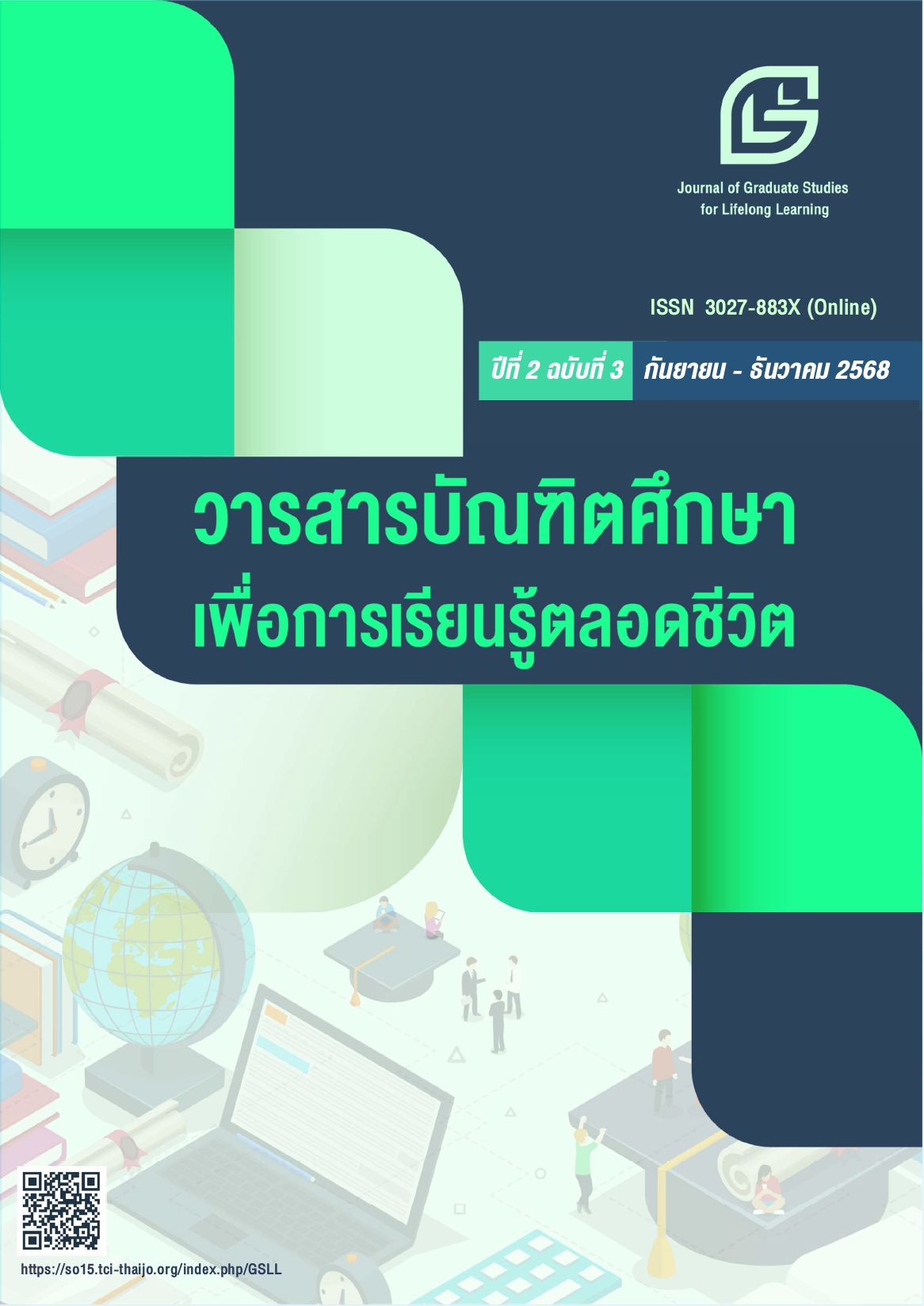Development of Animation Media on Industrial Waste Management among Automotive Parts Factory in Pathum Thani Province
Main Article Content
Abstract
This study aimed to develop an animated educational media on industrial waste management in accordance with ISO 14001:2015 standards.
The research was conducted using a research and development methodology. The research tools included the developed animation, a true-or-false knowledge test administered before and after the training, and a satisfaction questionnaire. All tools were validated for content accuracy by three experts, using a 5-point Likert scale for evaluation. The animation was used in a training session for a sample group consisting of 30 production department employees from an automotive parts assembly factory in Pathum Thani Province, selected through purposive sampling. Participants' knowledge was assessed before and after the training, and their satisfaction with the animation was evaluated. Data were analyzed using mean, standard deviation, percentage, and paired t-test.
The evaluation results of the animation media by experts showed mean scores of 4.42 for content, 4.50 for media quality, and 4.20 for the test, which are rated as high, highest, and high levels, respectively. Among the sample group, the majority were female 21 female participants (70%) and 9 male participants (30%). Most participants were aged between 31–40 years (43.30%) and had a work experience of 1–5 years (63.30%). The mean knowledge scores before and after the animation-based training were 10.10 ± 1.86 and 13.60 ± 1.04, respectively. The difference between the pre-test and post-test scores was statistically significant at the 0.05 confidence level. The average satisfaction score of the participants toward the animation media was 4.35, which is considered a high level. Therefore, the use of animated media effectively enhanced employees' knowledge on industrial waste management in accordance with ISO 14001:2015 standard.
Article Details

This work is licensed under a Creative Commons Attribution-NonCommercial-NoDerivatives 4.0 International License.
References
กรมควบคุมมลพิษ. (2566). รายงานสรุปสถานการณ์ขยะมูลฝอยของประเทศไทย ปี 2565. https://www.pcd.go.th
ชลัช โกตระกูล, พรรณเพ็ญ ฉายปรีชา, ชัยพร พานิชรุทติวงศ์ และอิทธิยา โกตระกูล. (2563, สิงหาคม 13). การออกแบบสื่อแอนิเมชัน 3 มิติ เรื่องผลกระทบจากการทิ้งขยะมูลฝอยสู่ท้องทะเลไทย. ใน เอกสารสืบเนื่องจากการประชุมวิชาการระดับชาติมหาวิทยาลัยรังสิต ประจำปี 2563. มหาวิทยาลัยรังสิต.
นันทรัตน์ กลิ่นหอม, ธีระพล สุทธิพนไพศาล, พิชญา เจริญใจ, ดิสรินทร์ โทนกล้า และวิภาวี นันทกุล. (2565). การพัฒนาสื่อการเรียนรู้ในรูปแบบแอนิเมชัน 3 มิติ เรื่อง ธุรกิจเกษตรทฤษฎีใหม่. Journal of Science and Technology, Southeast Bangkok College, 2(3), 42-51.
ศิมาภรณ์ น้อยพงษ์ และกฤติกา สังขวดี. (2559). ผลของการใช้สื่อเอนิเมชัน 2 มิติ ที่มีต่อผลสัมฤทธิ์ทางการเรียนเรื่องป่าไม้มหัศจรรย์ของนักเรียนชั้นมัธยมศึกษาปีที่ 3. วารสารเทคโนโลยีภาคใต้, 9(1), 7-11.
สุไม บิลไบ. (2557). นวัตกรรมและเทคโนโลยีสารสนเทศทางการศึกษา. https://drsumaibinbai.files.wordpress.com/2014/12/addie_design_sumai.pdf
อาฉ๊ะ บิลหีม, ทักษิณา นพคุณวงศ์ และศศิลักษณ์ ไชยตัน. (2565). การพัฒนาสื่อการสอนด้วยการ์ตูนแอนิเมชัน 3 มิติ เรื่อง การคัดแยกขยะ. วารสารวิทยาศาสตร์และเทคโนโลยี วิทยาลัยกรุงเทพ ตะวันออกเฉียงใต้, 2(3), 52-61.
Anwar, Y., Slamet, A., & Daniaty, U. (2023). Improving critical thinking skills through discovery learning models assisted animation video on digestive system material. JPBI (Jurnal Pendidikan Biologi Indonesia), 9(3), 433-444. https://doi.org/10.22219/jpbi.v9i3.29042
Hitesh. (2024, January 30). Advantage and disadvantage of animation. https://aaftonline.com/blog/advantages-and-disadvantages-of-animation/
Kolb, D. A. (2015, January). Experiential learning: Experience as the source of learning and development (2nd ed.). ResearchGate, https://www.researchgate.net/publication/315793484_Experiential_Learning_Experience_as_the_source_of_Learning_and_Development_Second_Edition.
Kurt, S. (2017, August 29). ADDIE Model: Instructional design. Educational Technology, https://educationaltechnology.net/the-addie-model-instructional-design/.
Mayer, R. E. (2020). Multimedia learning (3rd ed.). Cambridge University Press.
Sulistyowati, P., Ananda, N. S., & Hudha, M. N. (2021). Developing an instructional media based on augmented reality animation for 3R topic (Reduce, Reuse, and Recycle) of thematic learning. The 5th Annual Applied Science and Engineering Conference (AASEC2020). https://doi.org/10.1088/1757-899X/1098/3/032111


